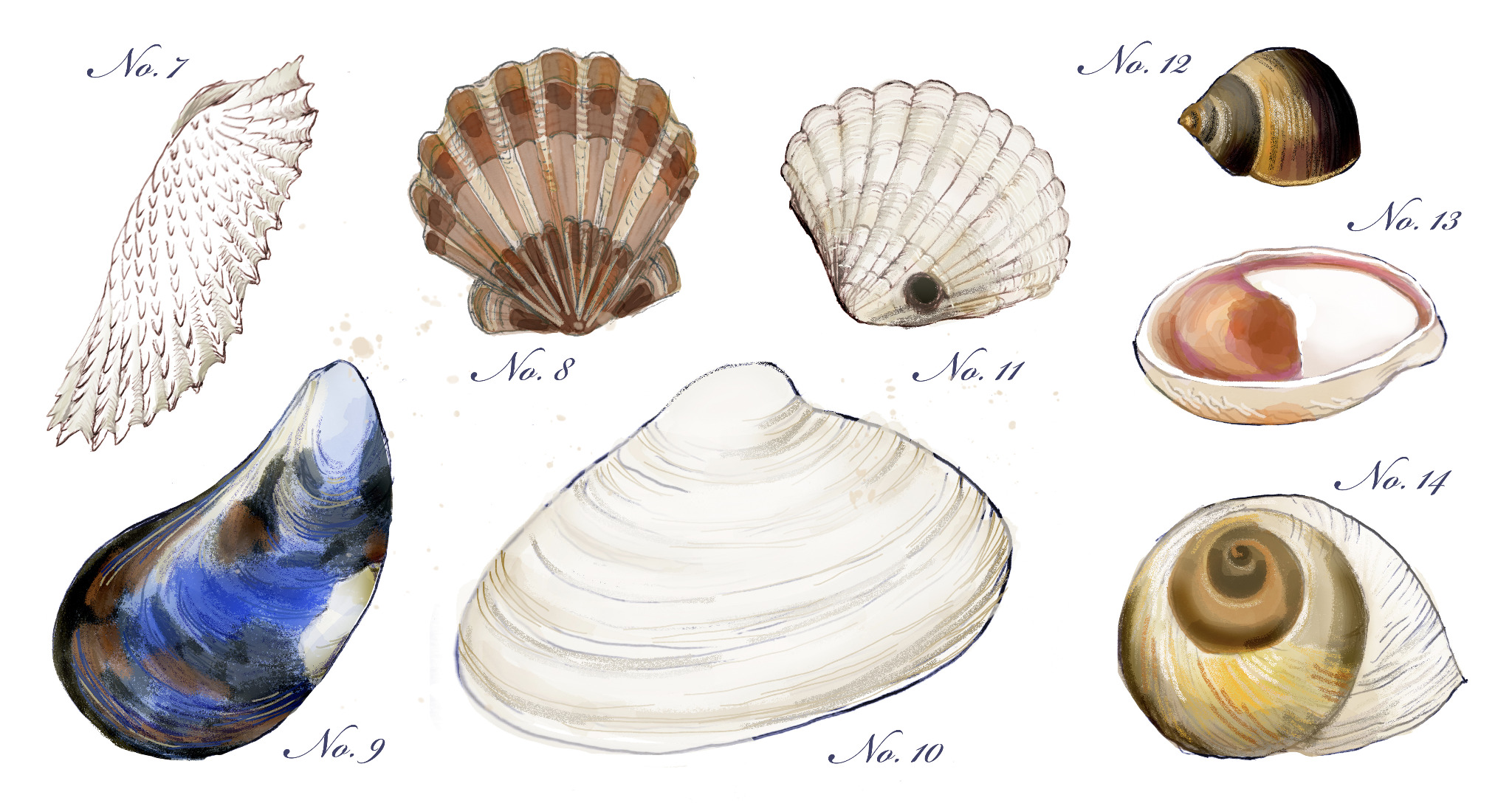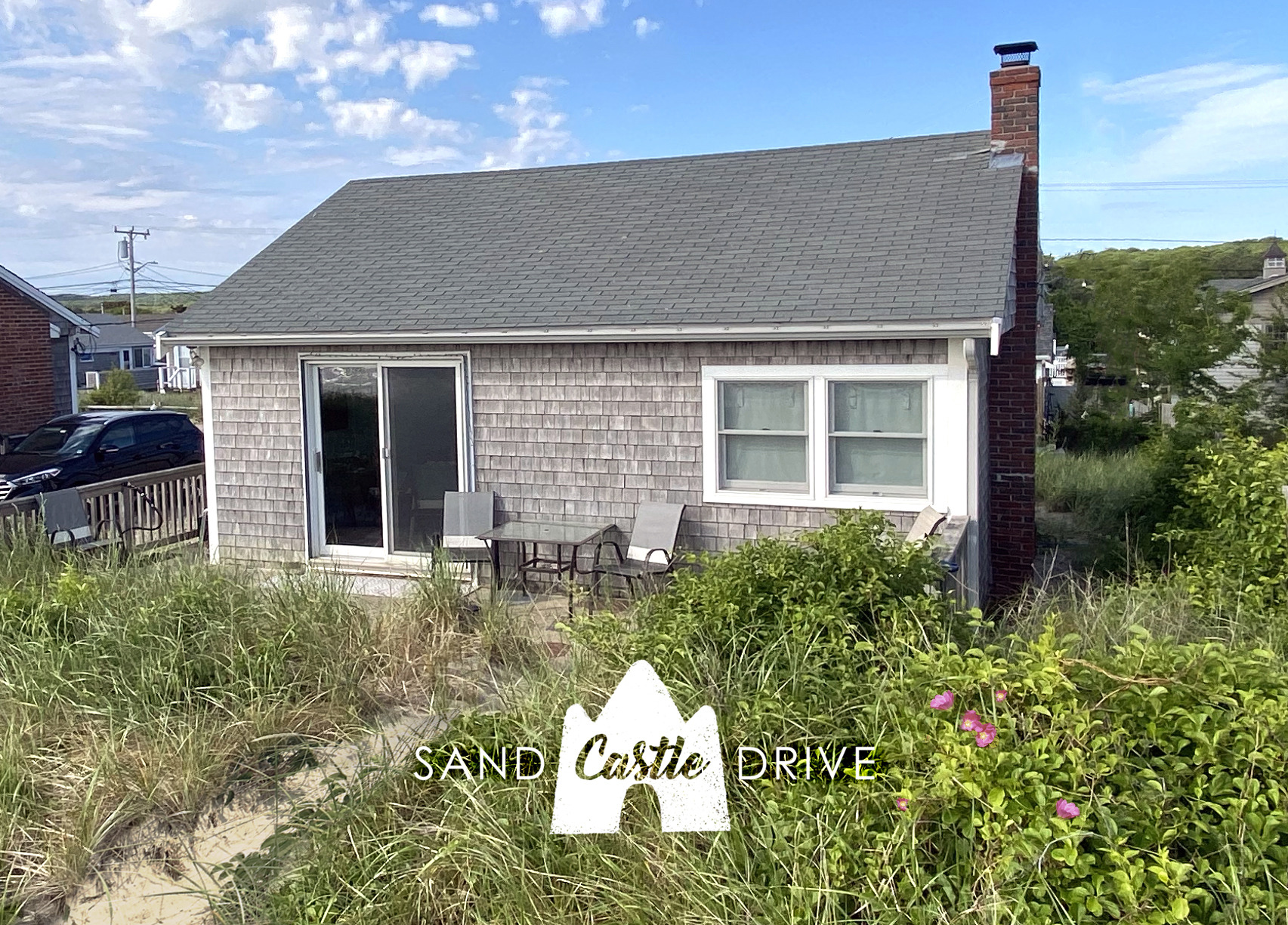SEAWEED
No. 1 - Bladder Wrack: Also known as Fucus Vesiculosus, is a brown algae commonly used as a fertilizer and as a nutritional supplement for iodine deficiency. The bladders of air pockets allow the plant to float up towards the sun light.
No. 1a - Sea Lace: Also known as Bryozoan, looks like a velvety coating and is formed of hundreds of small adjacent compartments in which thread like worms with a crown of tentacles call home.
No. 1b - Spirorbis Tubes: Often appearing as white dots, these are actually coiled tubes from the worm Spirorbis which secretes a calcareous shell and lives permanently inside the tube cemented to weeds.
No. 2 - Knotweed: Also known as Ascophyllum Nodosum, is a brown algae used as fertilizer however the massive increase in harvesting has caused states to require permits for removal in order to protect the ecosystem. You can identify how old the plant is since it grows one bladder per year.
No. 3 - Sea Lettuce: Also known as Ulva Lactuca, is an edible green algae. When decomposing in large masses, it can produce a toxic gas that is deadly.
No. 4 - Coral Weed: Also known as Corallina Officinalis, is a highly calcified red algae that can appear purple, red and pink, however when exposed to light it turns white. It has been used for medical purposes as bone forming material.
No. 5 - Gracilaria: Is a red algae used to extract agar that is a natural gelatin used in food, dental impressions and as a laxative among other things.
No. 6 - Irish Moss: Also known as Chondrus Crispus, is a red algae and commonly harvested for its carrageenin, alginate and agar that is often used as a natural stabilizer in dairy products, baked goods, pharmaceuticals, cosmetics, etc.
SEASHELLS

No. 7 - Angel Wing: The shells are pure white and belong to the most powerful boring clam that is strong enough to bore into rock and borrow two feet deep. These mollusks actually emit a strange green light and can glow in the dark.
No. 8 - Scallop: Unlike their relatives who spend most of their lives buried in sand, these mollusks are highly motile. They are free-living and can avoid predators by quickly opening and closing their shells to swim.
No. 9 - Mussel: Sought after as a delicacy and can be found in colonies securely bound to rocks with a series of tough threads called Byssal. This mussel "glue" has been investigated for surgical applications and construction of artificial tendons.
No. 10 - Clam: These commonly harvested mollusks grow quickly and can live for over 25 years, sometimes a hundred. Spending most of their lives buried in sand, clams have kidney's, a heart, mouth, stomach and nervous system.
No. 11 - Cockle: Home to edible marine bivalves which have two identical shells. They live buried in sediment and feed on plankton. Empty shells found with a single hole are likely the deadly result drilled by its predator the Moon Snail.
No. 12 - Periwinkle: Edible vegetarian snails that feed by scraping rocks with their several hundred rows of sharp teeth but can withstand large periods without food and water. They produce live young instead of aquatic eggs and larvae.
No. 13 - Slipper Shell: Often seen heaped and fastened together with larger older females below and smaller younger males on top. As the heap grows, males turn into females making them sequential hermaphrodites.
No. 14 - Moon Snail: A voracious blind predator that hunts mollusks by drilling a round hole through the shell and pours a corrosive acid inside to liquefy its meal. Their egg cases are sandpaper-like collars formed from mucus and filled with thousands of eggs.
Illustrated by Chelsea Revelle. Please do not copy or reproduce without permission.

Find your own beach treasures when you book a week at Sand Castle Drive, our oceanfront Cape Cod beach cottage in Sandwich, MA! Take a tour and learn more at Houfy.com/13505. On Houfy you book direct with owners and do not pay an additional 12 - 15% in service fees that other online travel agencies charge. Both hosts and guests save hundreds and therefore are able to offer you the lowest price!



